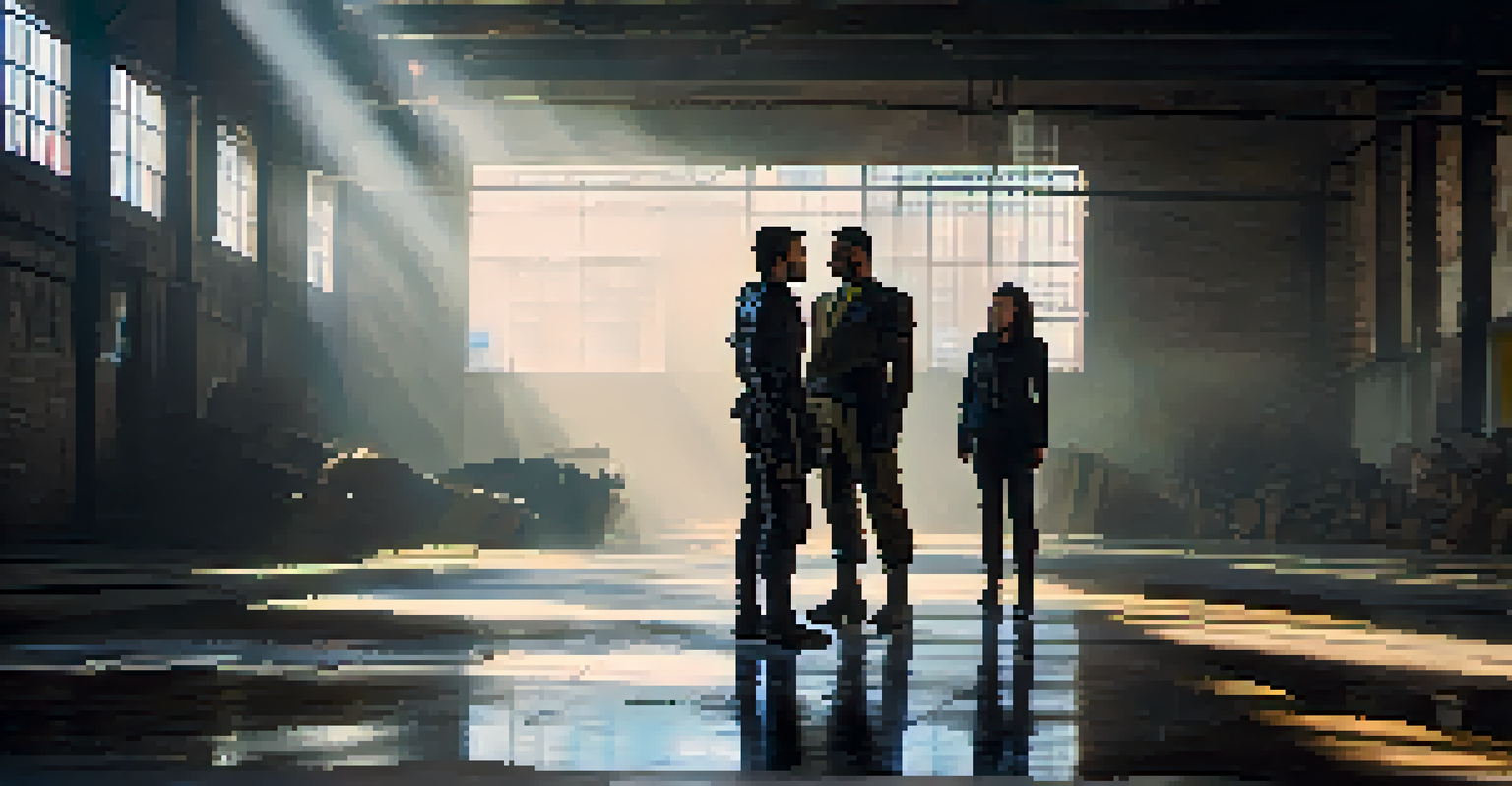The Journey of the Antagonist: Crafting a Compelling Foil

Understanding the Role of the Antagonist in Storytelling
Every great story needs a hero, but it also needs an antagonist to challenge that hero. The antagonist serves as a foil, highlighting the protagonist's strengths and weaknesses. This dynamic creates tension and drives the plot forward, making the story more engaging for readers.
The villain is not a monster; he’s a man who has lost his way.
Imagine a classic tale like 'Harry Potter.' Voldemort isn't just a villain; he’s a crucial element that shapes Harry's journey, forcing him to confront his fears and grow. The antagonist's motivations often mirror or contrast with those of the protagonist, enriching the narrative.
Ultimately, understanding the role of the antagonist is essential for writers. By crafting a compelling foil, you not only enhance your protagonist's journey but also create a more layered and interesting story.
Characteristics of a Compelling Antagonist
A well-crafted antagonist is multi-dimensional, with their own goals, desires, and flaws. They shouldn’t just be evil for the sake of being evil; instead, they should have relatable motivations that resonate with the audience. This depth makes them more realistic and engaging.

For example, consider Magneto from the X-Men series. His motivations stem from a place of trauma and a desire for protection, which makes him a sympathetic character despite his actions. This complexity allows readers to understand him, even if they don’t agree with his methods.
Antagonists Drive Story Conflict
The antagonist creates challenges that force the protagonist to grow, making the story more engaging.
The key is to ensure your antagonist feels like a real person rather than a caricature. By giving them a backstory and relatable emotions, you create a character who can challenge your protagonist in meaningful ways.
Creating Conflict Through the Antagonist's Actions
Conflict is the heart of any story, and the antagonist often plays a pivotal role in creating that conflict. They present challenges that force the protagonist to adapt and grow. Without these obstacles, the story would likely fall flat and lack excitement.
Every antagonist is a protagonist in their own story.
Think about a story where the protagonist faces financial ruin due to a ruthless business rival. This antagonist's actions create immediate stakes, pushing the protagonist to think creatively and take risks. The tension generated by their opposition fuels the narrative.
In crafting your antagonist's actions, consider how each decision they make can escalate the conflict. This will help maintain the reader's interest and keep the story moving forward.
The Importance of Backstory in Shaping the Antagonist
Every antagonist has a backstory that informs their current actions and beliefs. This history can explain why they oppose the protagonist and can even evoke sympathy from the audience. A rich backstory adds depth and complexity to your character.
For instance, in 'The Lion King,' Scar's jealousy and desire for power stem from being overshadowed by his brother, Mufasa. This background helps readers understand his motivations, even if they don't condone his actions. It makes Scar a tragic figure rather than just a villain.
Backstory Adds Depth to Antagonists
A rich backstory provides context for the antagonist's actions, making them more relatable and complex.
Incorporating backstory into your antagonist's development not only makes them more relatable but also helps to create a more immersive world for your readers.
The Antagonist's Relationship with the Protagonist
The relationship between the protagonist and antagonist is often the crux of the story. This dynamic can range from rivalry to deep-seated conflict, and it’s essential for driving the plot. Understanding how these characters interact can lead to a more compelling narrative.
Take the relationship between Batman and the Joker, for example. Their contrast highlights their differing ideologies, with Batman representing order and the Joker embodying chaos. This tension not only propels the story forward but also adds layers to both characters.
By carefully crafting this relationship, you can create moments of tension and drama that keep readers engaged and invested in the outcome.
Evolving the Antagonist Throughout the Story
A static antagonist can feel one-dimensional, while an evolving antagonist adds intrigue. As the story progresses, your antagonist should experience growth or change, whether through gaining new insights or facing consequences for their actions. This evolution can make them more compelling.
Consider how in 'Breaking Bad,' Walter White transforms from a sympathetic character into a more complex antagonist. His journey reflects his moral decline and ambition, making viewers question their loyalties. This shift adds depth to the story and keeps the audience engaged.
Dynamic Relationships Enhance Narratives
The relationship between the protagonist and antagonist is crucial for driving the plot and adding layers to both characters.
Allowing your antagonist to evolve not only enhances their character but also impacts the protagonist’s journey, creating a richer narrative landscape.
Crafting a Satisfying Resolution for the Antagonist
A well-rounded story often includes a resolution for the antagonist that feels earned and satisfying. This could mean their defeat, redemption, or even a tragic end. Whatever the case, it’s important that their arc comes to a conclusion that respects their journey.
In 'The Godfather,' Michael Corleone’s transformation into a ruthless leader reflects a tragic resolution for many characters, including the antagonist, who face the consequences of their choices. This kind of ending leaves a lasting impression on the audience.

By thoughtfully crafting the antagonist's resolution, you ensure that their journey complements the protagonist's, creating a more cohesive and memorable story.